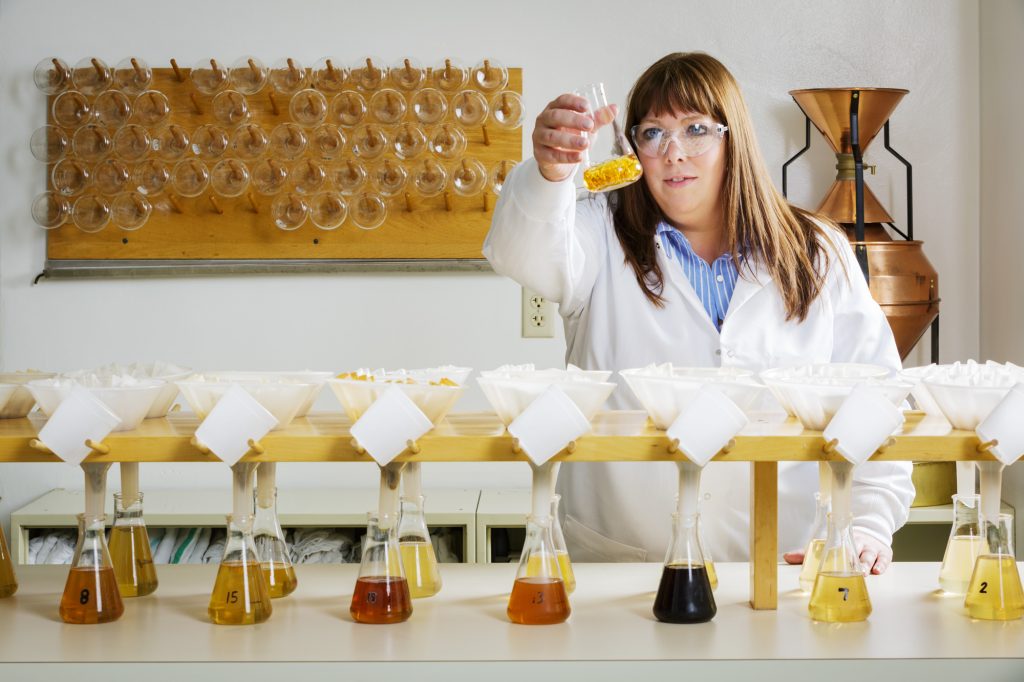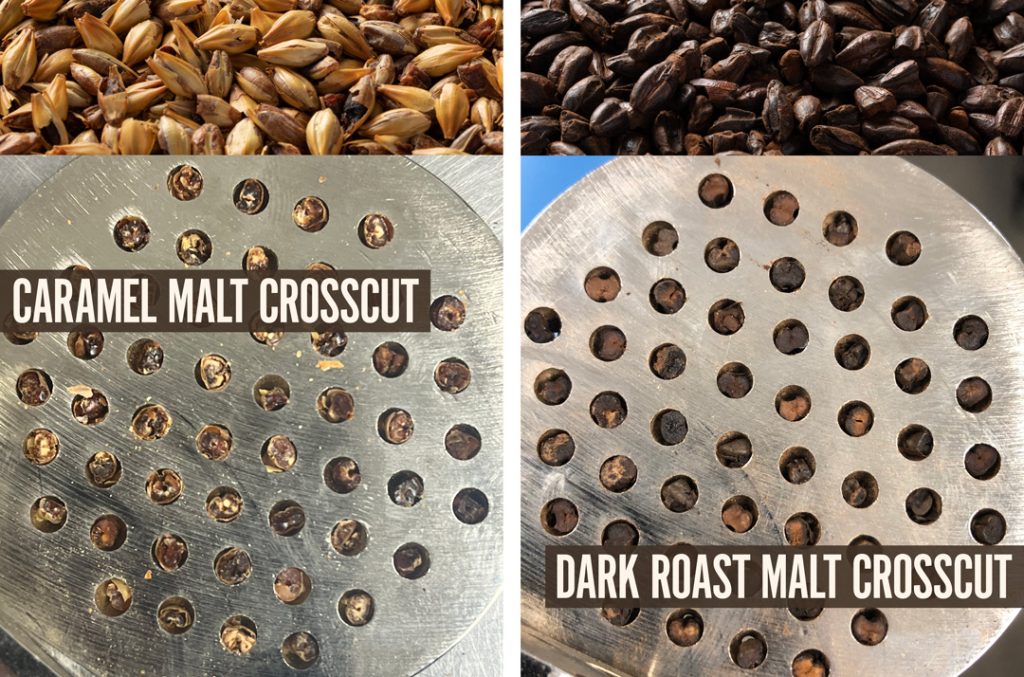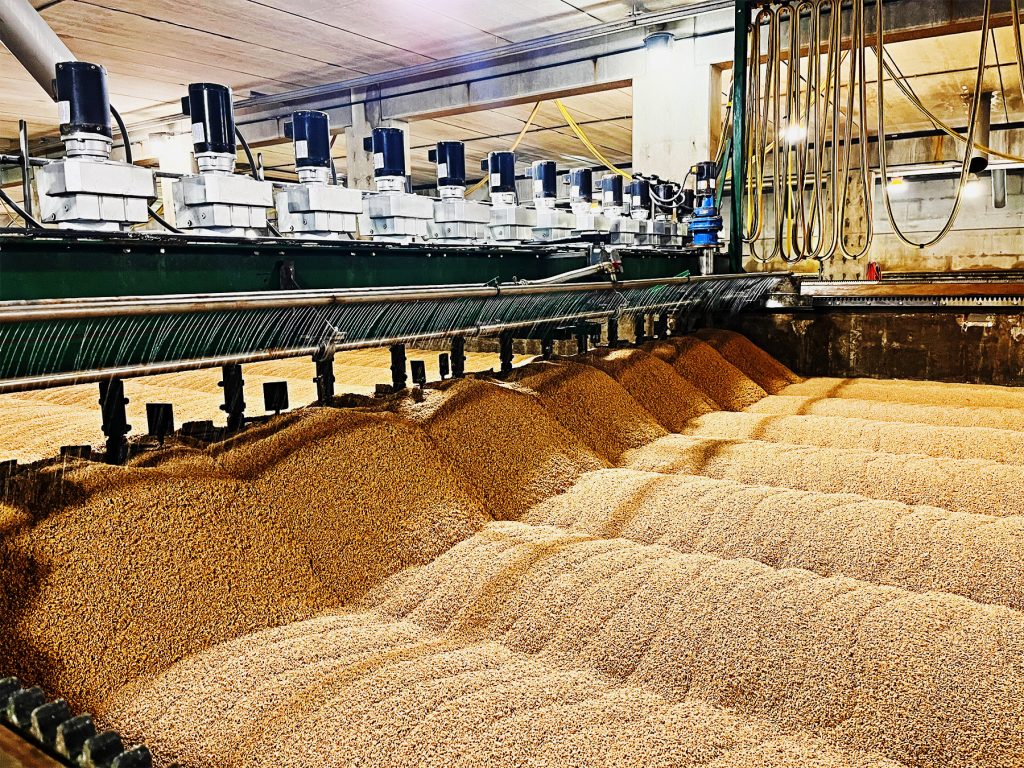
Tea is steeped in water in order to extract colors, flavors, and caffeine. Steeping is the process of placing something in a liquid in order to have it absorb the liquid and become more soluble.
We’ve done previous blogs on the hot steep sensory method, where malt is steeped in warm water to create a “tea” for sensory analysis. We’ve also done blogs on cold steeping, where color, flavor, and other valuable compounds are extracted from malt without mashing. Mashing malt requires a controlled enzymatic breakdown of the malt and requires specific temperatures, times, and most importantly active enzymes. This blog will give more details on steeping non-enzymatic malt as a brewing technique for brewing beer…and tea if you read to the end.
Steeping grain is a commonly used technique for certain non-enzymatic specialty malts that can add the color, flavor, and extract of the grain to wort quickly and easily without the need for complex equipment or processes. It is often used by homebrewers using extract, as the wort from the extract can be customized with steeped malts to make many beer styles. There are many examples of this in our recipe database including this one for Black IPA. Steeping is accomplished by putting crushed grain into a mesh bag, fine mesh stainless steel basket, or other steeping device that will allow the grain to freely mix with warm water and allow the soluble components to dissolve. Occasional agitation or circulation of the water in the vessel allows for better extraction. After 20-30 minutes, the steeping device can be removed slightly to drain and then removed completely to remove the grain from the liquid.
Why you don’t have to mash these malts:
Many specialty malts made in a roaster have all their starch converted to other substances by the roasting process. In crystal malt, the inside kernels contain converted extract. In dark roasted grains, the endosperm has been converted to highly soluble color and flavor compounds.

How do I know which malts can be steeped?
The following is a list of Briess products that we recommend for steeping:
- Carapils
®Malt (unique dextrine malt) - Extra Special Malt
- All Caramel Malts (Crystal malts, except Caramel Rye)
- All Dark Roasted Malts
- All Roasted Barley
If you are using a malt not on the list, look at the kernels. If you see white starchy or mealy endosperm, the grain needs to be mashed. If it looks crystalline or completely brown and friable, like the pictures above, it can be steeped.
How much malt do I use to steep and how much extract will I get?
How much malt to use really depends on how much flavor and color you want in the beer. In terms of flavor and color impacts, these compounds are highly soluble, and you get basically as much of them from a good steep as you would from using them in a mash. The extract gained from steeping dark roasted grains is also close to mashing, but with crystal malts the extract is more difficult to get into solution with just steeping. As steeping is normally used only for small amounts of highly colored grains, a good reference would be to look at the effects of using 1/10th of a lb. per gallon of water.
Impact of Steeping 0.1 lbs Grain/Gallon
| Malt | Color | Plato | S.G. | Gravity points |
| Caramel Malt (60L) | 6 | 0.35 | +.0015 | 1.5 |
| Black Malt (500L) | 50 | 0.7 | +.0030 | 3.0 |
What about that Tea you promised me?
After the above comments, it should come as no surprise that malt has been used as the basis for several types of herbal teas over the years. One of my favorite recipes is for a tea that tastes like a warm cinnamon bun. It’s a recipe so good that in Tech Service we named it, “Caramel Cin”.
Caramel Cin Tea:
For each standard (6 oz) cup of tea, steep in:
- 180° F + water
- 3 grams (1 teaspoon) of coarse ground Caramel Malt 120L
- 3 grams of coarse cinnamon (Found online at Penzey’s Spices)
If you don’t have cinnamon chunks, you can grind a cinnamon stick in a coffee grinder or steep it in the tea until you get the desired flavor. (Refer to the Cara-Cinn-Tea Blog)


